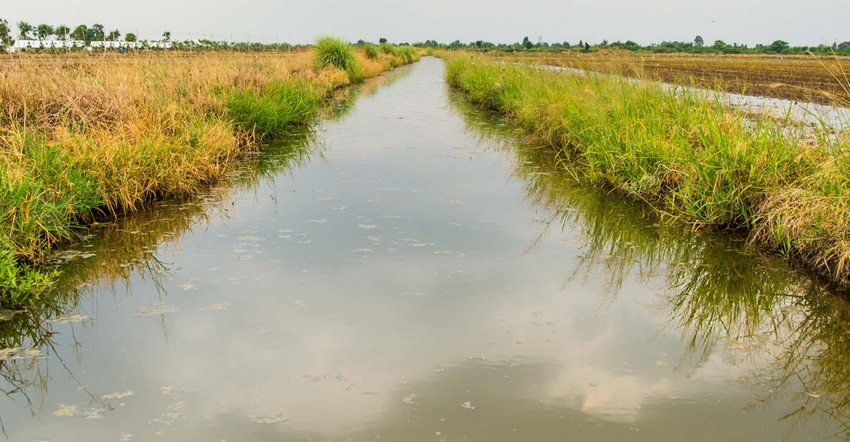
Last Tuesday, Dec. 11, 2018, the U.S. Environmental Protection Agency and the U.S. Army Corps of Engineers announced President Trump’s proposal to undo a hated major Obama administration environmental regulation known as “Waters of the United States” (WOTUS).
The Obama administration rule was first published in 2015 and has been the subject of many cases filed in U.S. District Court and various U.S. Courts of Appeal.
Power grab?
Farmers and ranchers condemned the Obama rule in 2015 as a massive power grab and a major abuse of private property rights. President Trump raised the issue incessantly while campaigning for the presidency. In fact, he made it a signature issue and soon after assuming the presidency signed an executive order which began the long process of repealing WOTUS and attempting to protect property rights.
Acting EPA Administrator Andrew Wheeler, acting on the president’s behalf, stated “Our simpler and clearer definition…[will] help landowners understand whether a project on their property will require a federal permit or not, without spending thousands of dollars on engineering and legal professionals.” EPA’s proposed rule for comment totals 253 pages. In the weeks to come we will examine numerous definitions of what is a water of the United States.
Navigable waters are all navigable waters of the United States; tributaries of navigable waters; interstate waters; interstate lakes, rivers, and streams utilized by interstate travelers and which fish and shellfish are taken and sold in interstate commerce; and the interstate lakes, rivers and streams which are used for industrial purposes in interstate commerce.
The massive EPA and Corps proposed regulation provides an extensive regulatory and court case history involving numerous challenges to what is a WOTUS.
On Feb. 28, 2017, President Trump issued Executive Order 13778. The Executive Order was entitled “Restoring the Rule of Law, Federalism, and Economic Growth by Reviewing the ‘Waters of the United States Rule’’ The president stated “[I]t is in the national interest to ensure the nation’s navigable waters are kept free from pollution, while at the same time promoting economic growth, minimizing regulatory uncertainty and showing due regard for the roles of Congress and the states under the Constitution.”
The lengthy proposed regulation attempts to redefine what is a wetland, adjacency, ditch, lakes and ponds, and whether rice fields and cranberry bogs will be waters of the United States.
The proposal is not final because EPA and the Corps seek comment from interested parties on what is a WOTUS. The proposed rule indicates there will be an attempt to assure the regulatory community that waters will be interpreted within the ordinary meaning of that term and that not all water in the United States will be considered a WOTUS.
What is ‘adjacent wetlands’?
For example, much controversy has centered around the term “adjacent wetlands.” Many landowners have been confronted by either EPA or the Corps claiming the landowner’s property is an adjacent wetland and the land is miles away from any conceivable WOTUS.
The adjacent wetland is defined in the new Trump administration proposal as wetlands “…that abut or have a direct hydrological surface connection to other waters of the United States in a typical year.” The proposal states “wetlands physically separated from other waters of the United States by upland or by dikes, barriers, or similar structures and also lacking a direct hydrologic surface connection to such waters are not adjacent under…today’s proposal.”
Another proposed definition of extreme importance to agriculture has to do with drainage tile. WOTUS does not include “…features that flow only in response to precipitation; groundwater, including groundwater drained through subsurface drainage systems; certain ditches; prior converted cropland; artificially irrigated areas that would revert to upland if artificial irrigation ceases…”
Opposition speaks out
Environmental groups said “…the new definition would cut the number of waterways the federal government must regulate, leaving them vulnerable to pollution.” Brett Hartl, speaking for the Center for Biological Diversity, stated “The Trump administration’s radical proposal would destroy millions of acres of wetlands, pushing imperiled species like steelhead trout closer to extinction.”
Another battle between environmentalists and agriculture begins.
The opinions of the author are not necessarily those of Farm Futures or Farm Progress.
About the Author(s)
You May Also Like




